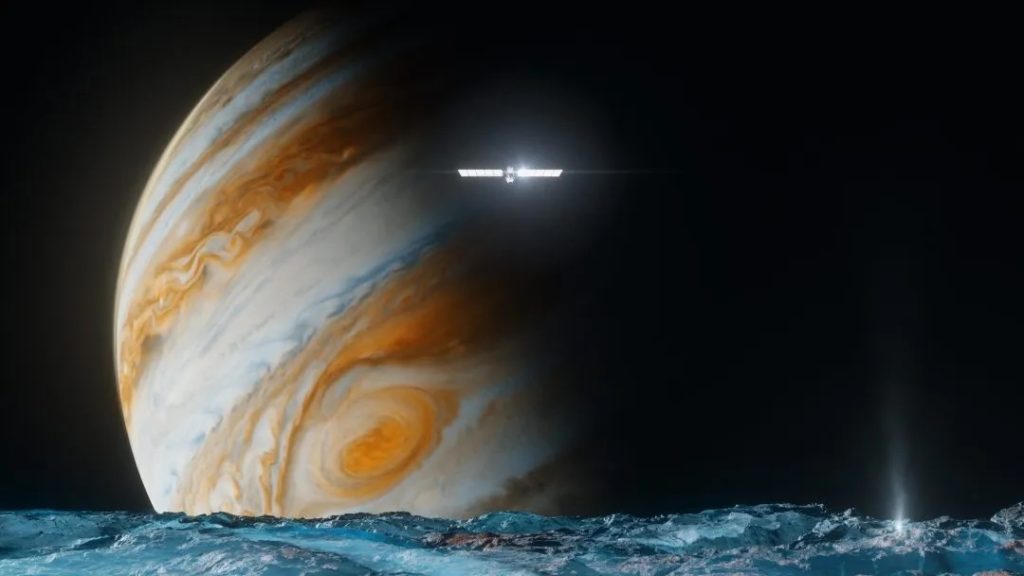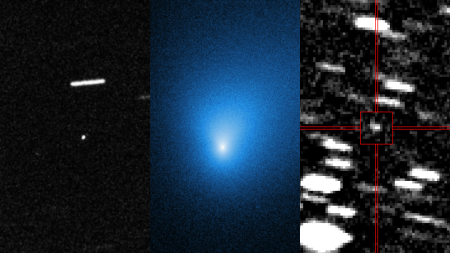2024: A Year of Lunar Landings and Martian Discoveries
The year 2024 witnessed a flurry of activity on the lunar surface, marking a significant step in the renewed interest in Earth’s celestial neighbor. Japan achieved a historic milestone with the SLIM spacecraft, achieving the nation’s first soft landing on the moon, albeit a slightly tilted one. While designed for a short mission, SLIM defied expectations by transmitting data for three months, exceeding its planned lifespan. Intuitive Machines’ Odysseus spacecraft also touched down on the moon, though it landed on its side. Despite this, valuable data was collected, particularly regarding the lunar south pole, a region of key interest for NASA’s Artemis program, which aims to return humans to the moon by 2026. China’s Chang’e 6 mission accomplished a remarkable feat by retrieving the first-ever samples from the far side of the moon. Initial analyses revealed intriguing differences between far-side soil, which appears fluffier, and near-side soil. Further chemical studies suggested volcanic activity on the moon’s far side around 2.8 billion years ago, adding a new layer to our understanding of lunar geology. Intriguingly, the Chang’e 6 orbiter subsequently positioned itself at the L2 Lagrange point, a gravitationally stable location also home to the James Webb Space Telescope, raising questions about China’s future plans for the orbiter.
Martian Explorations and the Search for Life’s Traces
On Mars, the year began with a bittersweet farewell to Ingenuity, the groundbreaking helicopter that far exceeded its planned mission duration, conducting 72 flights over three years. Its demise, due to rotor damage, marked the end of a pioneering era in Martian exploration. Meanwhile, Ingenuity’s partner, the Perseverance rover, continued its scientific investigations, culminating in a potential landmark discovery – a rock containing possible biosignatures, hinting at the existence of ancient microbial life on Mars. This exciting find, however, was tempered by uncertainties surrounding the future of the Mars Sample Return mission, which faces budgetary challenges that could jeopardize the return of these intriguing samples to Earth for in-depth analysis.
Private Spaceflight Ventures: Triumphs and Challenges
The private spaceflight sector also experienced significant developments in 2024. SpaceX, building on its previous successes, facilitated the first all-civilian spacewalk, further pushing the boundaries of commercial space activities. The Polaris Dawn mission saw four astronauts embark on a journey to the International Space Station, testing new spacesuits and gathering valuable data on radiation and human physiology in space. In a touch of artistic flair, one crew member, Sarah Gillis, achieved the distinction of being the first person to play the violin in the vastness of space. However, not all ventures went as smoothly. Boeing’s Starliner mission, intended as an eight-day trip to the ISS, encountered technical difficulties with its thrusters, delaying the return of astronauts Sunita Williams and Butch Wilmore. Ultimately, the Starliner returned to Earth without its crew, who will now remain aboard the ISS until February 2025, awaiting a SpaceX Dragon spacecraft to transport them home. This incident highlighted the inherent complexities and challenges of space travel, even for established players in the private sector.
Farewell to a Planetary Guardian and New Insights into Mercury
In August, the NEOWISE telescope concluded its mission, leaving a gap in Earth’s planetary defense system. Originally designed for infrared astronomy, NEOWISE was repurposed to track near-Earth objects, providing valuable data on asteroids and comets that pose potential threats to our planet. While NEOWISE’s retirement leaves a void, the upcoming NEO Surveyor mission, slated for launch in 2027 or later, is expected to continue this vital work of monitoring potentially hazardous space rocks. Meanwhile, further afield, the BepiColombo spacecraft continued its journey towards Mercury, conducting close flybys to refine its trajectory for orbital insertion in 2026. One flyby in particular provided unique views of Mercury’s south pole, offering insights into the planet’s topography. These close approaches, observing the planet from different angles and lighting conditions, are providing valuable data in advance of BepiColombo’s eventual orbital mission.
Europa Clipper: Embarking on a Journey to an Icy Ocean World
A major highlight of 2024 was the launch of NASA’s Europa Clipper, a mission designed to explore Jupiter’s icy moon, Europa. This ocean world, harboring a vast subsurface ocean beneath a thick ice shell, is considered one of the most promising locations in our solar system for the potential existence of extraterrestrial life. Upon arrival at Jupiter in 2030, Clipper will embark on a series of close flybys of Europa, collecting data about its composition, surface features, and subsurface ocean. Due to the intense radiation environment around Jupiter, Clipper will not orbit Europa directly, but will instead perform repeated close approaches, allowing it to gather crucial data while minimizing exposure to harmful radiation. This innovative approach underscores the challenges of exploring this enigmatic moon and the commitment to unraveling its secrets.
A Year of Progress and Anticipation
The year 2024 marked significant progress in space exploration, from lunar landings and Martian discoveries to private spaceflight achievements and the launch of ambitious missions to distant worlds. While there were both triumphs and setbacks, the collective efforts continued to push the boundaries of human knowledge and understanding of the cosmos. The year concluded with a sense of anticipation for the discoveries and advancements to come in the exciting years ahead, as we continue to explore the vast expanse of space.















